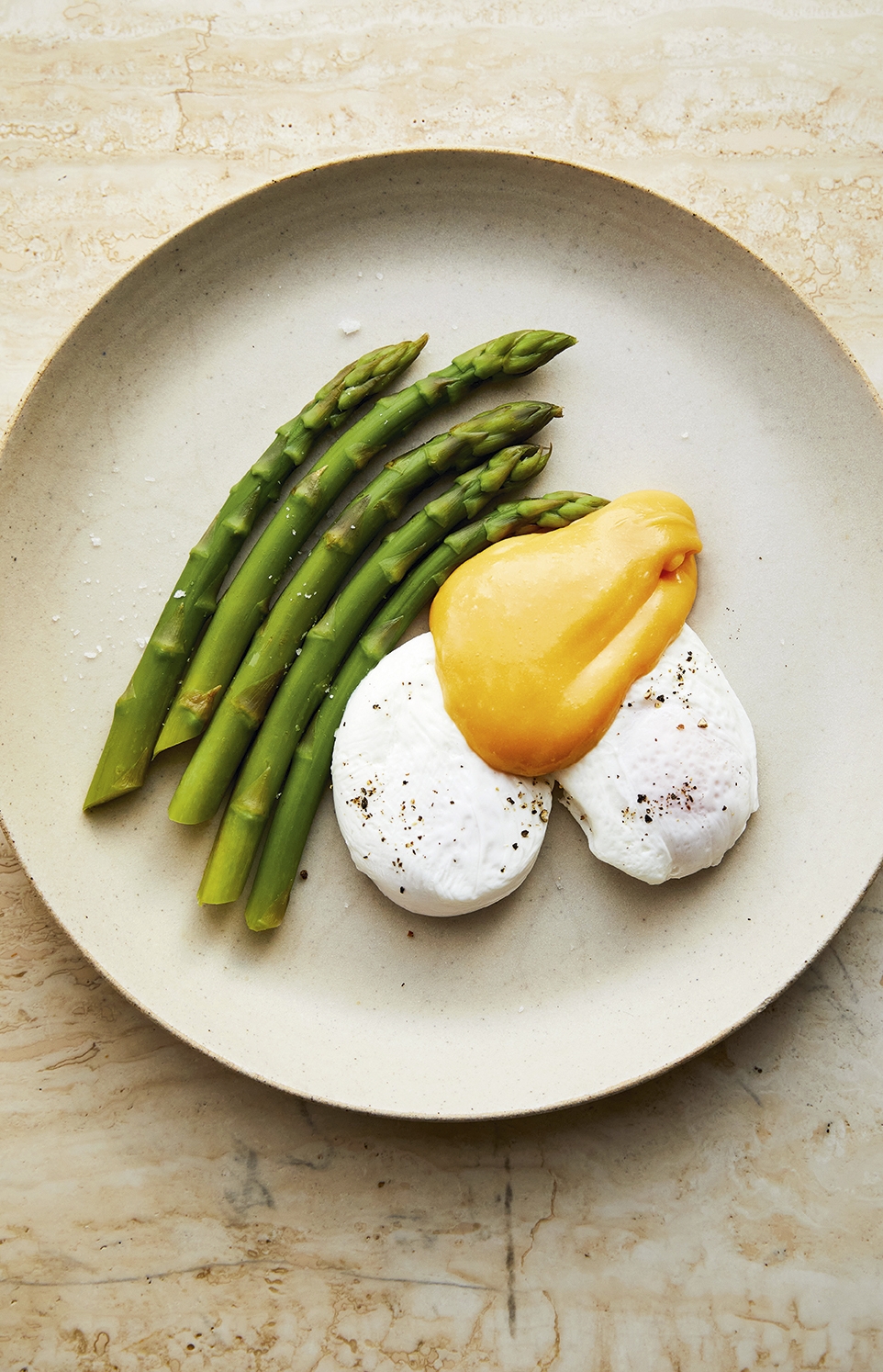Get Premium access to all the latest content online
Subscribe and view full print editions online... Subscribe
Serves 2 Starters and mains
Cut the butter into around 10 equal-sized cubes. Heat in a small pan set over a medium-high heat until it melts and froths. When that frothing subsides (a non-frothing circle will grow from the centre outwards) and the butter smells nutty, turn off the heat and strain through a fine metal sieve into a heatproof jug.
Fill a separate pan with a 3-4cm depth of water and set over a low heat so the water barely simmers. Put a metal or glass bowl over the pan, add the yolks, vinegar and 1/2tsp cold water and use a balloon whisk to vigorously whisk them together for 2-3 minutes until glossy and voluminous.
Remove the bowl from the heat. Slowly dribble in the strained butter, continuously whisking, until every drop has been incorporated and you have a stable hollandaise, similar in texture to double cream approaching ribbon stage. Stir in the lemon juice and reserve in a warm place.
Fill a medium pan with water to a depth of 10cm or so, bring to a simmer, then reduce the heat so the water remains just below simmering with a regular stream of fine bubbles. Add the vinegar and swirl the water in rapid circles with a wooden spoon. Tip one egg from a low height into the water, continuing to swirl the water around the edges of the pan with the spoon handle, and, after 10 seconds, add the second egg. If you are cooking more than 2 eggs, either continue to add the others in the same way or cook in a separate batch, until cooked to your liking.
Meanwhile, steam or boil the asparagus for around 3 minutes, and toast, then butter the bread.
Serve the asparagus and eggs with a generous quantity of hollandaise and season with black pepper.
Why not subscribe to the digital edition? Enjoy recipes and more on the go!

Advertisement
Subscribe and view full print editions online... Subscribe